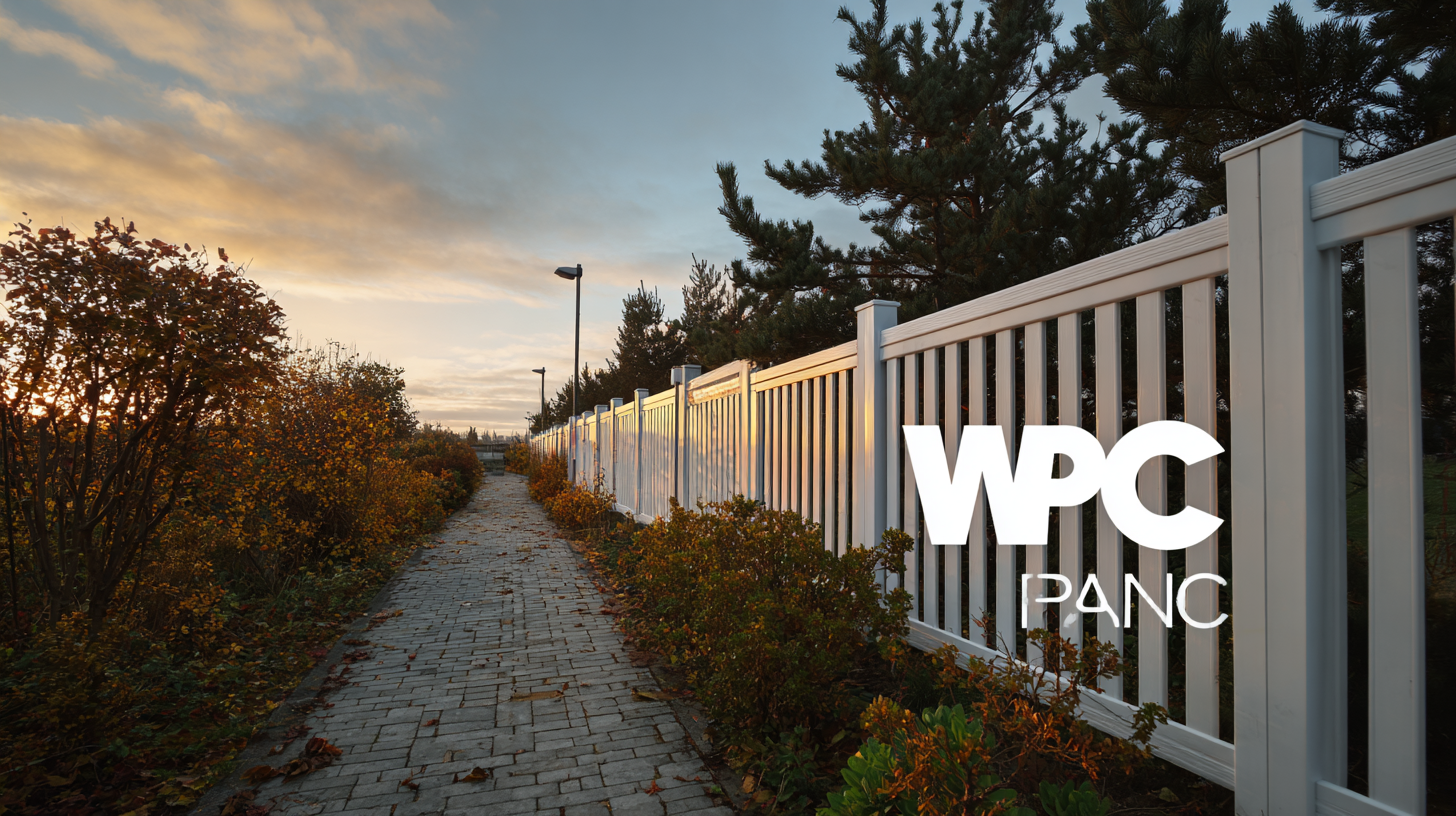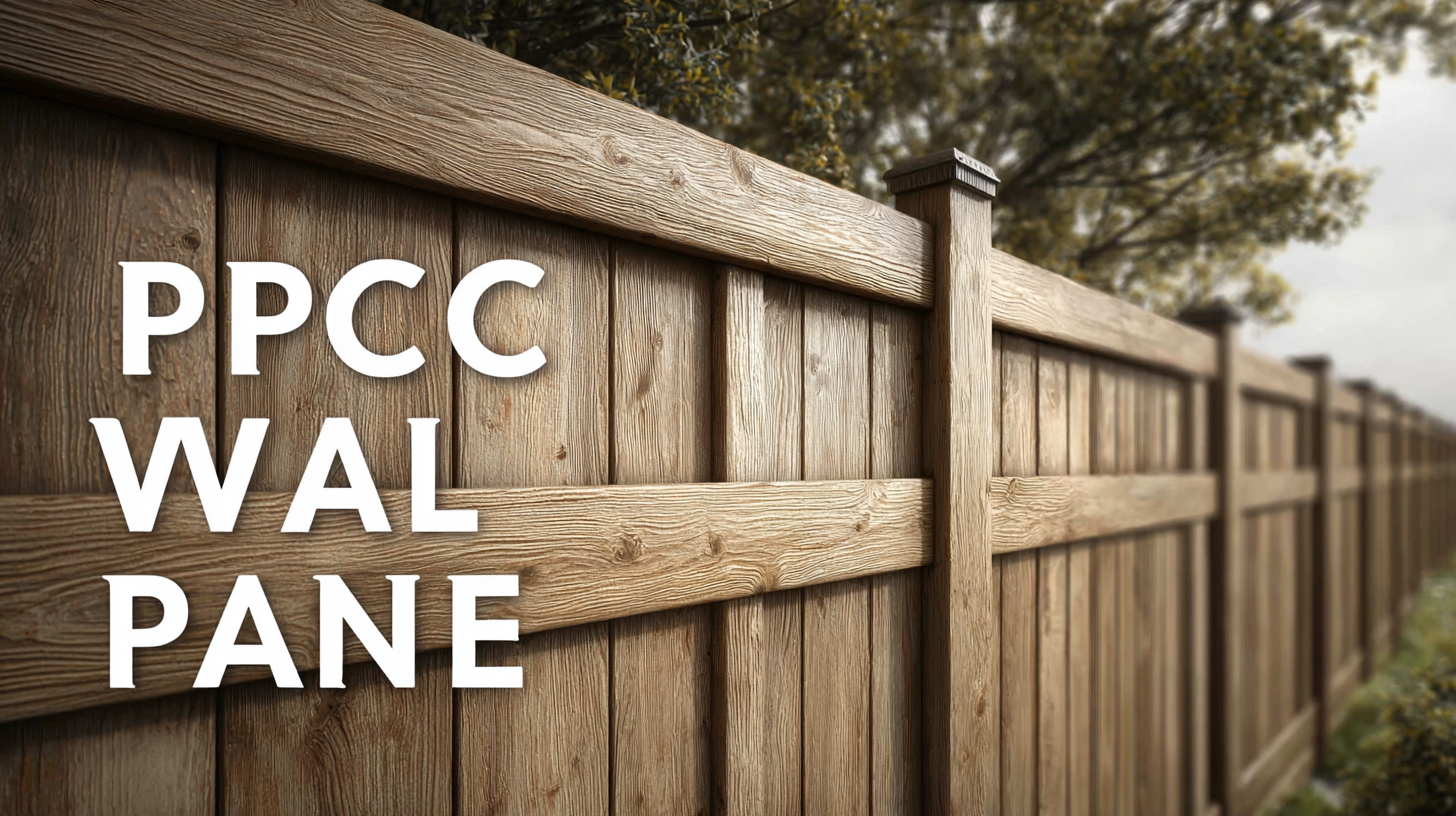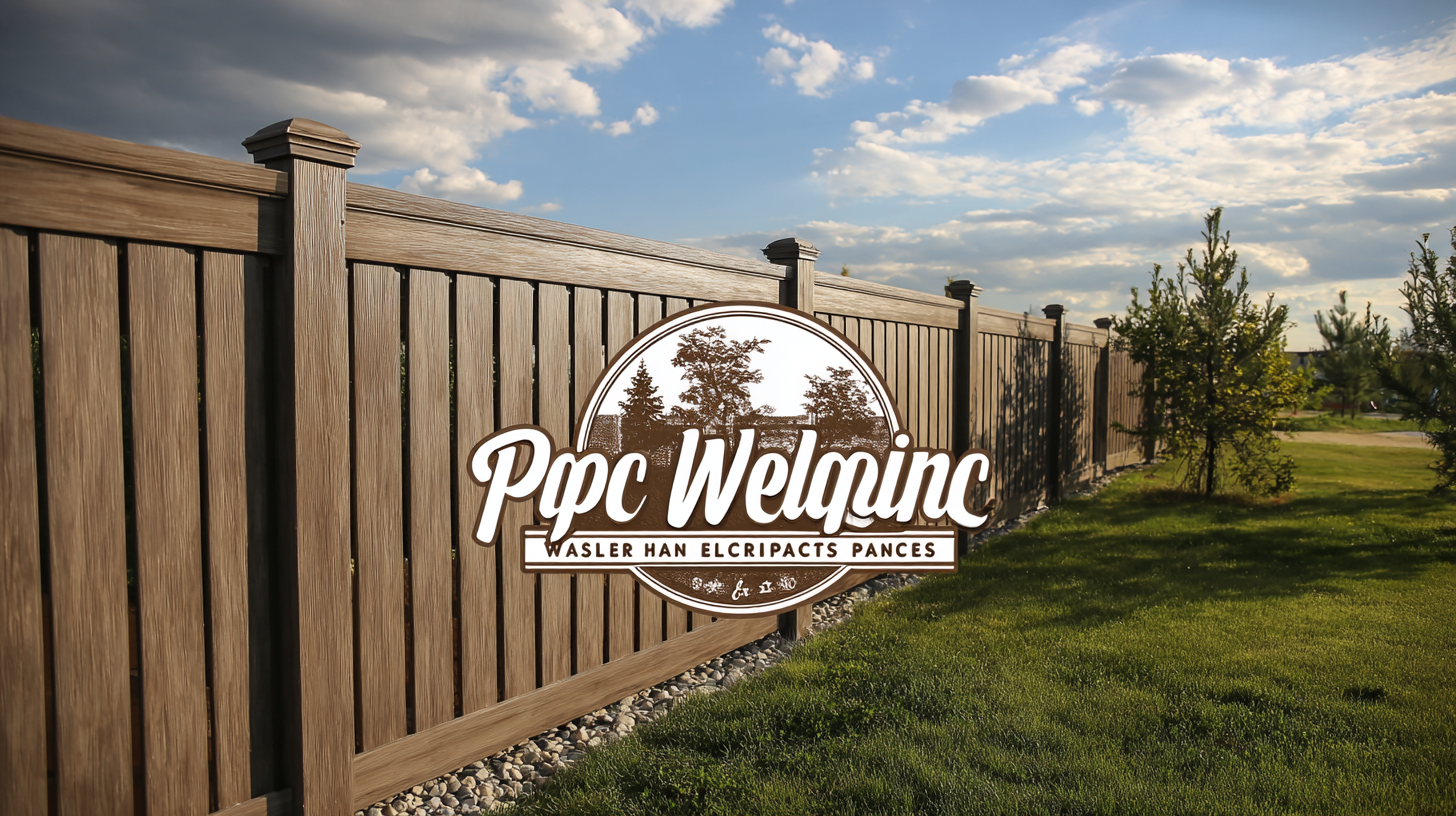Shandong Xiangying New Materials Technology Co., Ltd.
Shandong Xiangying New Materials Technology Co., Ltd.
When selecting the best WPC (Wood Plastic Composite) fence panels for your property, it's crucial to consider a variety of technical specifications to ensure durability and aesthetic appeal. According to the latest industry reports, the global market for WPC products is projected to reach USD 7.1 billion by 2025, reflecting a growing preference for eco-friendly and low-maintenance fencing solutions. WPC fence panels, known for their resilience against rot, insects, and fading, offer an attractive alternative to traditional materials. Key factors such as the composition ratio of wood fibers to plastic, resistance to weather conditions, and structural integrity must be evaluated. By prioritizing these technical parameters, property owners can make informed decisions that not only enhance their landscape but also provide long-term value.

When it comes to enhancing your property’s exterior, choosing the right WPC (Wood Plastic Composite) fence panels is crucial. Understanding the different types of WPC fence panels available will help you make an informed decision that aligns with your style and functional requirements. Generally, WPC fence panels come in several styles, including privacy panels, picket fences, and semi-privacy options. Each type provides various levels of security and aesthetics, allowing you to select what best fits your needs.
When selecting WPC fence panels, consider the durability and maintenance requirements. Some panels offer a higher resistance to weather conditions, such as UV rays and moisture, which can prolong their lifespan significantly. **Tip:** Always check the warranty options and customer reviews for insights on the product’s performance over time.
Another consideration is the color and design that complements your property. WPC fence panels are available in a wide range of colors and textures, providing flexibility in matching your existing outdoor elements. **Tip:** Visualize how the panels will look with your landscape by using color samples or digital tools to avoid any mismatched aesthetics. This approach ensures your fence not only serves its purpose but also enhances your property's overall appeal.
When selecting WPC (Wood Plastic Composite) fence panels for your property, durability should be a primary consideration. A robust material not only withstands the elements but also prolongs the lifespan of your investment.
Recent market trends indicate that the WPC wall panel market is projected to grow significantly, with estimates suggesting it will expand from $4.5 billion in 2024 to $7.2 billion by 2033. This growth reflects an increasing preference for materials that combine aesthetic appeal with practical durability, making WPC an attractive option.
Moreover, key factors such as resistance to moisture, UV exposure, and termite damage play a crucial role in the durability of WPC fence panels. A high-quality panel will typically include additives that enhance its longevity and strength, allowing it to endure harsher conditions compared to traditional fencing materials. As the market continues to evolve, choosing WPC panels that meet these durability standards can ensure that your fence remains both functional and visually appealing for many years to come.

When selecting WPC (Wood Plastic Composite) fence panels for your property, aesthetic options play a pivotal role in enhancing your landscape. The versatility of WPC materials allows homeowners to choose from a variety of colors and styles that can seamlessly blend with their environment.
According to a report by MarketsandMarkets, the global WPC market is projected to reach $4.5 billion by 2026, showcasing an increasing trend towards innovative design options in fencing solutions. This growth is driven by consumer preferences for low-maintenance, visually appealing outdoor structures.
WPC fence panels are available in a myriad of styles, from traditional wooden looks to modern, sleek designs. Popular colors include earthy tones like browns and greens, which mimic the natural appearance of wood, as well as more contemporary shades like gray and white that offer a clean, polished look.
A study by Research and Markets indicates that color trends in outdoor products are heavily influenced by urban design, with a notable shift towards sustainable materials and environmental consciousness in consumer choices. By understanding these aesthetic options, property owners can make informed decisions that not only meet their functional needs but also elevate their property's visual appeal.
When it comes to installing WPC fences, a key consideration is cost-effectiveness. Budgeting for WPC fence installation requires a thorough assessment of both upfront costs and long-term benefits. Begin by evaluating the initial expense of WPC fence panels compared to other materials like wood or vinyl. While WPC may require a slightly higher initial investment, its durability and low maintenance needs can lead to significant savings over time. Moreover, understanding the potential return on investment in terms of property value enhancement is essential.

Conducting a cost-benefit analysis involves not only examining material costs but also considering installation expenses, potential repair costs, and the lifespan of the fence. This approach is similar to frameworks used in various policy assessments, where evaluating all costs and benefits ensures better decision-making. By applying this structured analysis, property owners can make informed choices that align their budget constraints with long-term goals, ensuring that their WPC fencing installation is both financially sound and meets their aesthetic and functional needs.
When choosing WPC (Wood Plastic Composite) fence panels, environmental impact plays a crucial role in promoting sustainability. According to a report from the Research Institute for Wood Products, WPC materials can significantly reduce natural resource depletion since they utilize recycled wood fibers and plastics. Studies indicate that using WPC can save around 70% of the timber that would typically be consumed in traditional wooden fencing, helping to preserve forests and biodiversity.
Moreover, WPC products exhibit a lower carbon footprint compared to conventional fencing materials. The National Renewable Energy Laboratory found that the production of WPC can emit up to 30% less CO2 when utilizing reclaimed materials. Additionally, WPC fencing panels have a longer lifespan—often exceeding 25 years—resulting in reduced waste generation over time. By opting for WPC fencing, property owners not only enhance the aesthetic appeal of their space but also contribute to a more sustainable future by choosing environmentally friendly materials that are both durable and efficient.
| Criteria | Description | Environmental Impact | Durability Rating | Cost per Square Foot |
|---|---|---|---|---|
| Material Composition | Made from recycled wood and plastic | Sustainable materials reduce landfill waste | High | $10 - $15 |
| UV Resistance | Protects from sun damage and fading | Increases longevity, less frequent replacements | High | $12 - $18 |
| Maintenance Requirements | Low maintenance, no painting or staining | Less chemical use for maintenance | Medium | $10 - $14 |
| Recyclability | Can be recycled at end of life | Promotes circular economy | High | $11 - $16 |
| Aesthetic Variety | Available in various colors and styles | Encourages use without visual sacrifice | Medium | $9 - $13 |
